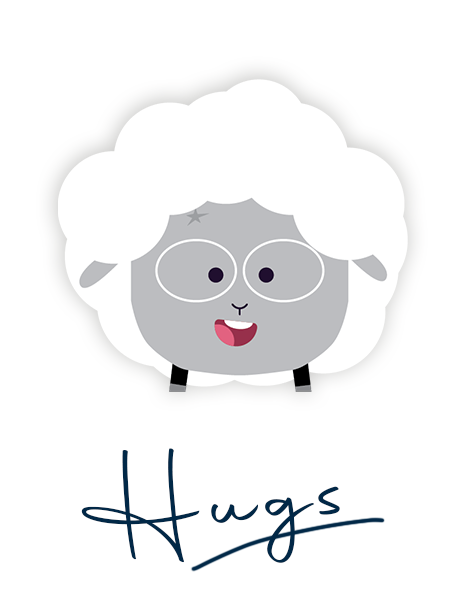 Greetings, fellow language enthusiasts! This is Hugs, language detective, on yet another intriguing case. Today, let’s unravel the intricacies of variables in multilingual translation.
Greetings, fellow language enthusiasts! This is Hugs, language detective, on yet another intriguing case. Today, let’s unravel the intricacies of variables in multilingual translation.
Sifting the evidence: friend or foe?
Cleverly defined custom text variables, with their wondrous ability for automatic updates, are an important ally for content creators. A typical use case, in formats ranging from DITA XML to Adobe InDesign, would be a code name for a new product. Once the final name is known, just update the basic variable definition once – and, hey presto, your whole document gets updated as well! But when it comes to multilingual communications, could these same variables become your foes?
 The crime scene: variables gone awry
The crime scene: variables gone awry
Let’s get straight to the point: text variables designed purely with the English language in mind can prove a – sometimes insurmountable – challenge for translators. Why is that? With my famous flair for glitches in localization, I’ve singled out two main suspects: articles and inflection.
Unlike English with its all-purpose “the”, many languages use articles in gender-specific variants: “le” or “la” in French, “der”, “die” or “das” in German… In some languages, such as Swedish and Romanian, articles take the form of suffixes stuck on to nouns.
Inflection refers to variations in word forms designed to express different grammatical categories. English does this, but other languages do it far more extensively, not least by distinguishing different grammatical cases of nouns and noun modifiers: genitive, dative, etc. Starting with 4 such cases in German, there tend to be 6 or more in Balto-Slavic languages – and a whopping 18 in Hungarian! Where do such subtleties go when a single variable must say it all? 
Clever workarounds for clever translators – and their limitations
Say you have two alternate company names, ABC Ltd. and XZY Inc., to be used in different versions of your document, and you have defined a variable to facilitate this. Grammatically speaking, company names are nouns and hence subject to inflection in many languages.
 To avoid having to inflect the actual company name, a savvy translator will add the translated word for “company” in front of the name, e.g. “společnost” in Czech or “компания” in Russian. This word, rather than the name itself, will then take the inflected endings.
To avoid having to inflect the actual company name, a savvy translator will add the translated word for “company” in front of the name, e.g. “společnost” in Czech or “компания” in Russian. This word, rather than the name itself, will then take the inflected endings.  The same basic principle can be applied to variables representing product names or even more complex technical terms: a generic word, such as “model” or “system”, gets added in front of the variable.
The same basic principle can be applied to variables representing product names or even more complex technical terms: a generic word, such as “model” or “system”, gets added in front of the variable. 
- However, depending on the complexity of the term pulled in for your variable, the translated text may turn out convoluted and lengthy. For local readers, it may prove difficult to understand and have a weird, unnatural feel to it. Just how weird? Well, imagine that, rather than calling a spade a spade, you would have to say something like “the tool spade” each and every time that word occurs in a given text.

 And what if the translator simply added the appropriate inflected endings after your variables? Hey, that sounds like a good strategy!
And what if the translator simply added the appropriate inflected endings after your variables? Hey, that sounds like a good strategy! 
- The bad news is: it’s not necessarily only about endings, but can mean changing letters within words. Worse, in complex, multi-word expressions, it may very well be a word in the middle of a variable that requires inflection. Also, inflection rules are complex. As soon as the word represented by your variable gets changed, any ending originally added by a translator will very likely have to be changed as well. That defeats the very purpose of using variables: easy, no-fuss updating.

The verdict: handle with care!
 But fear not, my friends. Armed with best practices and a dash of detective intuition, we can navigate this linguistic maze with confidence. Here is my simple list of Variable DOs and DON’Ts:
But fear not, my friends. Armed with best practices and a dash of detective intuition, we can navigate this linguistic maze with confidence. Here is my simple list of Variable DOs and DON’Ts:
- DO
 use variables representing dates, page, numbers, document names, model numbers, etc. No problem with those at all.
use variables representing dates, page, numbers, document names, model numbers, etc. No problem with those at all.
- DO
 use text variables as long as the text in question will remain in English.
use text variables as long as the text in question will remain in English.
If at all possible, DON’T  put variables on translatable text.
put variables on translatable text.
To accommodate different variants, consider working with conditional text instead.
- While preparing your project, DO
 send us a list of text variables you intend to use. We will analyze this list, advise on feasibility and share it with our translators.
send us a list of text variables you intend to use. We will analyze this list, advise on feasibility and share it with our translators.
- DO
 include an up-to-date PDF file that shows how your variables will appear in your final document. The variables as such are not necessarily self-explanatory to translators.
include an up-to-date PDF file that shows how your variables will appear in your final document. The variables as such are not necessarily self-explanatory to translators.
- Less is more. DON’T
 pepper your content with seemingly wonderful variables just in case they may come in handy at some point.
pepper your content with seemingly wonderful variables just in case they may come in handy at some point.
- DON’T
 use variables if you simply want to make sure that a given term gets left in English or translated in a specific way. Count on our carefully maintained termbases instead.
use variables if you simply want to make sure that a given term gets left in English or translated in a specific way. Count on our carefully maintained termbases instead.
Your main take-away
When it comes to variables, leave nothing to chance: be transparent, engage with my pals at Sparkling Lengua, trust their considerable expertise. 
Any questions left unanswered? Get in touch. Enjoyed this ride with me? Stay tuned for other upcoming investigations.
Yours truly,

Hugs, language detective


 GRATIS-ANGEBOT
GRATIS-ANGEBOT 


 Greetings, fellow language enthusiasts! This is Hugs, language detective, on yet another intriguing case. Today, let’s unravel the intricacies of variables in multilingual translation.
Greetings, fellow language enthusiasts! This is Hugs, language detective, on yet another intriguing case. Today, let’s unravel the intricacies of variables in multilingual translation. The crime scene: variables gone awry
The crime scene: variables gone awry
 The same basic principle can be applied to variables representing product names or even more complex technical terms: a generic word, such as “model” or “system”, gets added in front of the variable.
The same basic principle can be applied to variables representing product names or even more complex technical terms: a generic word, such as “model” or “system”, gets added in front of the variable. 
 But fear not, my friends. Armed with best practices and a dash of detective intuition, we can navigate this linguistic maze with confidence. Here is my simple list of Variable DOs and DON’Ts:
But fear not, my friends. Armed with best practices and a dash of detective intuition, we can navigate this linguistic maze with confidence. Here is my simple list of Variable DOs and DON’Ts:



















